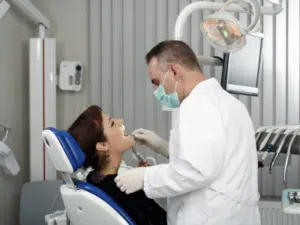What’s the difference between an orthodontist and a dentist?

Orthodontists and dentists are two such professions that are essential in oral care. Despite having the same objective of ensuring healthy smiles, they vary in their fields of expertise and the kinds of treatments they offer. Residents of the Pacific Northwest must understand the difference between orthodontists and dentists because dental care is highly valued here. Understanding the specialisation of a Tacoma orthodontist can help residents of Tacoma and the surrounding areas achieve a beautiful, straight smile.
Orthodontists and dentists help patients improve their oral health but in different ways. Dentistry is a broad medical speciality that deals with the teeth, gum, nerves, and jaw, while orthodontics is a speciality within dentistry that focuses on correcting bites, occlusion, and the straightness of teeth. One important difference is that all orthodontists like Dr Mark Sundberg are dentists, but not all dentists are licensed orthodontists.
Defining dentists and orthodontists?
Dentists are the primary oral healthcare professionals who specialise in identifying, managing, and preventing a wide range of oral health problems. In order to earn a Doctor of Dental Surgery (DDS) or Doctor of Dental Medicine (DMD) degree, they must complete substantial coursework and training. Dentists are in charge of oral exams, cleanings, fillings, extractions, and basic oral health care.
Orthodontists are specialised dentists who concentrate on the positioning and alignment of the jaws and teeth. To obtain a Master’s degree or a professional certificate in orthodontics, they must complete additional study and training after graduating from dentistry school. Their expertise is using braces, aligners, or other orthodontic tools to treat tooth and jaw abnormalities.
Orthodontists offer a wide range of services, including:
- Orthodontic evaluations: Extensive examinations to identify orthodontic problems such as overcrowding, underbites, and overbites.
- Treatment Planning: Based on the evaluation, creating individualised treatment strategies for particular dental abnormalities.
- Appliances and Braces: Professional installation, repositioning, and upkeep of braces, clear aligners, and other orthodontic appliances.
- Orthodontic intervention: Early intervention to direct a child’s jaw growth and tooth eruption, averting more serious issues.
Dentists offer a wide range of services, including:
- Dental Check-Ups: At routine dental check-ups, dentists examine the mouth’s tissues, including the teeth, gums, and jaw. They evaluate the necessity of cleanings, diagnostic tests, and X-rays.
- Dental cleanings: Plaques, tartar, and stains are removed from teeth during professional cleanings by dentists. In addition, they offer instructions on how to brush and floss teeth properly.
- Restorative procedures: Dentists use various techniques, including fillings, crowns, bridges, and implants, to repair decayed or damaged teeth.
- Gum Disease Treatment:Periodontitis and gingivitis are two gum illnesses that dentists can diagnose and treat. They may give patients referrals to experts or do extensive cleanings or pharmaceutical prescriptions if necessary.
How are they different?
There are more differences than similarities. An orthodontist requires additional schooling as a dental speciality, similar to a doctor who obtains additional schooling to become a surgeon. Another difference is that orthodontists specialize in helping patients align their teeth, improving their bite, or fitting them for corrective braces and devices.
Dentists typically encourage good oral hygiene and provide services related to:
- Tooth decay
- Root canals
- Gum disease
- Crowns
Orthodontists are dentists that specialize in the alignment of teeth and provide services related to:
- Misaligned teeth
- Crowded teeth
- Overbite
- Underbite
 How can an orthodontist help
How can an orthodontist help
Orthodontists help with crooked teeth but also assist patients with other issues. These include overbites and underbites, crossbites, spaces between teeth, overcrowding, and treating temporomandibular disorders (TMD).
Dentists and orthodontists both contribute to oral healthcare, although their duties and areas of specialisation are different. Orthodontists specialise in correcting tooth and jaw misalignments, while dentists focus on general oral health and offer a wide range of dental procedures. By comprehending how these specialists differ, you may choose the right one for your oral health requirements and gain access to complete treatment.
Conclusion
Our team of skilled orthodontists at Pacific Northwest Orthodontics takes great satisfaction in collaborating closely with dentists to provide patients with excellent orthodontic care. We’re committed to assisting you in achieving a healthy and beautiful smile, from identifying malocclusions to creating individualised treatment plans. Schedule a consultation and learn how our experience can change your oral health journey, call us now.




 How can an orthodontist help
How can an orthodontist help